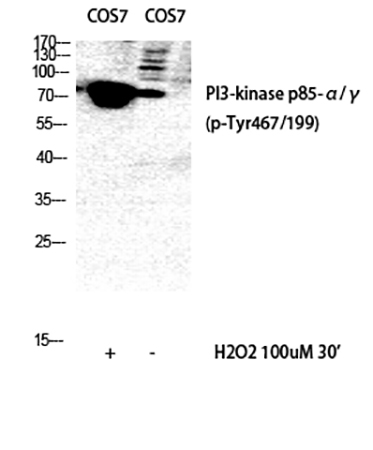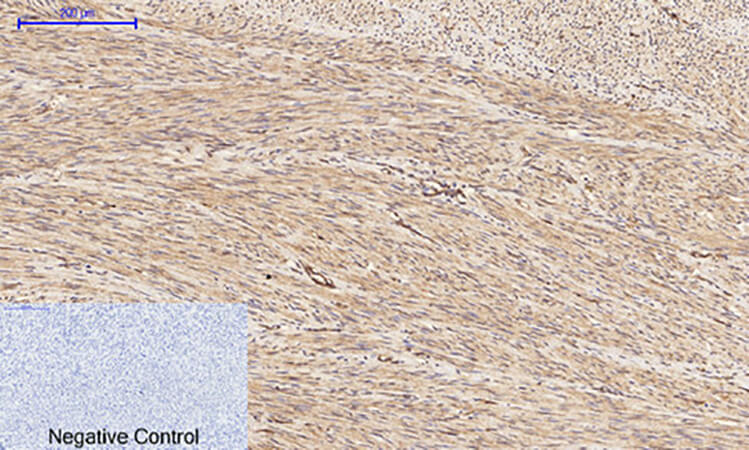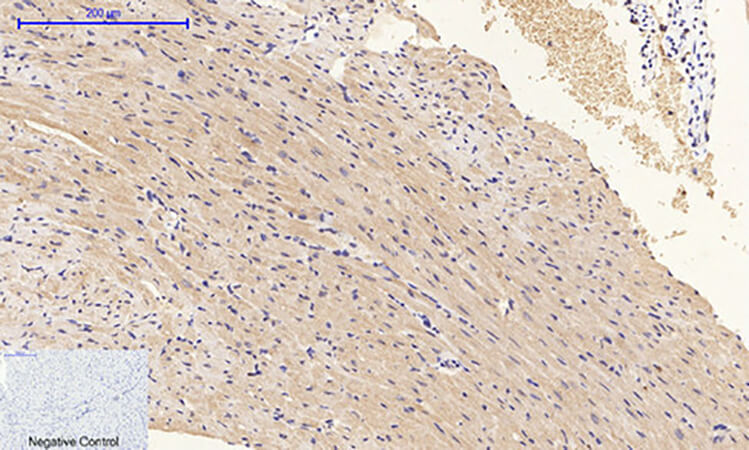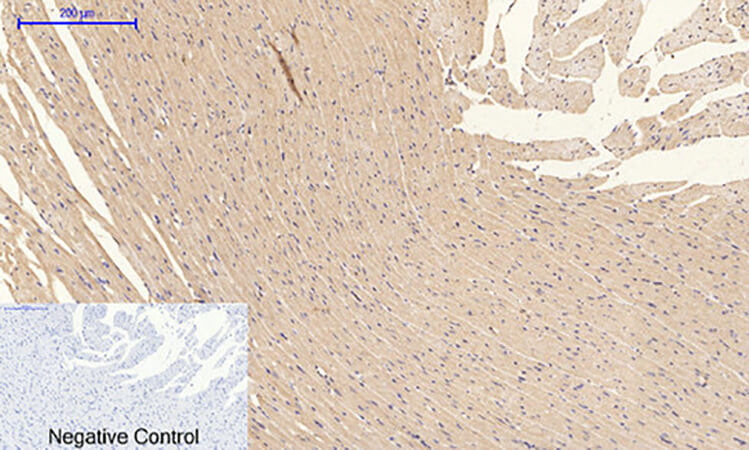| Product name | PI 3-kinase p85/p55 (phospho Tyr467/199) Polyclonal Antibody |
| Immunogen | Synthesized peptide derived from human PI 3-kinase p85/p55 around the phosphorylation site of Y467/199 |
| Host | Rabbit |
| Reactivity | Human, Monkey, Mouse, Rat |
| Applications | ELISA, IF, IHC-P, WB |
| Applications notes | Optimal working dilutions should be determined experimentally by the investigator. Suggested starting dilutions are as follows: WB (1:500-1:2000), IF (1:200-1:1000), IHC-P (1:100-1:300), ELISA (1:10000). Not yet tested in other applications. |
| Clonality | Polyclonal |
| Preparation method | The antibody was affinity-purified from rabbit antiserum by affinity-chromatography using epitope-specific immunogen |
| Alternative | PIK3R1; GRB1; Phosphatidylinositol 3-kinase regulatory subunit alpha; PI3-kinase regulatory subunit alpha; PI3K regulatory subunit alpha; PtdIns-3-kinase regulatory subunit alpha; Phosphatidylinositol 3-kinase 85 kDa regulatory subunit alph |
| Formulation | Liquid solution |
| Concentration | 1 mg/ml |
| Molecular weight | 55, 85 KD |
| Storage buffer | PBS containing 50% Glycerol, 0.5% BSA and 0.02% Sodium Azide. |
| Storage instructions | Stable for one year at -20°C from date of shipment. For maximum recovery of product, centrifuge the original vial after thawing and prior to removing the cap. Aliquot to avoid repeated freezing and thawing. |
| Shipping | Gel pack with blue ice. |
| Precautions | The product listed herein is for research use only and is not intended for use in human or clinical diagnosis. Suggested applications of our products are not recommendations to use our products in violation of any patent or as a license. We cannot be responsible for patent infringements or other violations that may occur with the use of this product. |
| Background | Phosphoinositide 3-kinases (PI3Ks) phosphorylate inositol lipids and are involved in the immune response. The protein encoded by PIK3CG (phosphatidylinositol-4,5-bisphosphate 3-kinase catalytic subunit gamma) is a class I catalytic subunit of PI3K. Like other class I catalytic subunits (p110-alpha p110-beta, and p110-delta), the encoded protein binds a p85 regulatory subunit to form PI3K. This gene is located in a commonly deleted segment of chromosome 7 previously identified in myeloid leukemias. Several transcript variants encoding the same protein have been found for PIK3CG. |
| Gene ID | 5295 |
| Alternative | PIK3R1; GRB1; Phosphatidylinositol 3-kinase regulatory subunit alpha; PI3-kinase regulatory subunit alpha; PI3K regulatory subunit alpha; PtdIns-3-kinase regulatory subunit alpha; Phosphatidylinositol 3-kinase 85 kDa regulatory subunit alph |
| Others | Phospho-PI 3-kinase p85/p55 (Y467/199) Polyclonal Antibody detects endogenous levels of PI 3-kinase p85/p55 protein only when phosphorylated at Y467/199. |
| Accession | P27986/Q92569 |

Fig.1. Western Blot analysis of COS7 (1), COS7 (2), diluted at 1:1000.

Fig.2. Immunohistochemical analysis of paraffin-embedded human uterus tissue. 1, PI 3-kinase p85/p55 (phospho Tyr467/199) Polyclonal Antibody was diluted at 1:200 (4°C, overnight). 2, Sodium citrate pH 6.0 was used for antibody retrieval (>98°C, 20min). 3, secondary antibody was diluted at 1:200 (room temperature, 30min). Negative control was used by secondary antibody only.

Fig.3. Immunohistochemical analysis of paraffin-embedded Mouse heart tissue. 1, PI 3-kinase p85/p55 (phospho Tyr467/199) Polyclonal Antibody was diluted at 1:200 (4°C, overnight). 2, Sodium citrate pH 6.0 was used for antibody retrieval (>98°C, 20min). 3, secondary antibody was diluted at 1:200 (room temperature, 30min). Negative control was used by secondary antibody only.

Fig.4. Immunohistochemical analysis of paraffin-embedded rat heart tissue. 1, PI 3-kinase p85/p55 (phospho Tyr467/199) Polyclonal Antibody was diluted at 1:200 (4°C, overnight). 2, Sodium citrate pH 6.0 was used for antibody retrieval (>98°C, 20min). 3, secondary antibody was diluted at 1:200 (room temperature, 30min). Negative control was used by secondary antibody only.
Author:Y Dong, Y Liu, J Tang, J Du, X Zhuang, S Tan Publication name:Journal of Ethnopharmacology IF:5.4
Author:T Wu, Q Tian, R Liu, K Xu, S Shi Publication name:Journal of Cellular and Molecular Medicine IF:5.295
You must be logged in to post a review.
1.The species of antibody reactivity should be the sample species that can be matched normally after Abbkine R&D experts have passed strict scientific verification. If your sample is not within the range of reactivity, in order to improve the efficiency and results of your experiment, it is not suggested to try other species. Otherwise, it may lead to sample mismatch and affect the effect of your experiment.
2.Please aliquot the antibody received as soon as possible and store it at -20℃, avoid repeated freezing and thawing, and use it within one year.
Welcome any form of communications, and better service will be provided here.
Tell: +1-404-854-0155
Email: service@abbkine.com
Support Email: support@abbkine.com
Address: 3052 Stroop Hill Road, Apt 203, Atlanta 30303, Georgia, United States of America




Reviews
There are no reviews yet.